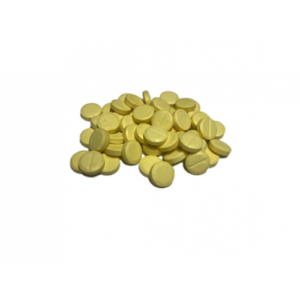Cyclopyrrolon
Cyclopyrrolon: Bulk Industrial-Grade Chemicals for Research and Manufacturing
The Cyclopyrrolon category at https://realchemstore.org/ features high-purity, industrial-grade cyclopyrrolone derivatives and related compounds, available exclusively in bulk quantities. This category is designed for industrial buyers, manufacturers, and research engineers who need reliable, consistent chemicals for advanced synthesis, analytical research, and large-scale R&D projects.
What the Cyclopyrrolon Category Includes
- Cyclopyrrolones: A class of compounds including zopiclone, eszopiclone, and pagoclone, known for their unique pyrrolopyrazine structures and value as reference materials or intermediates in pharmaceutical and chemical research.
- Related analogues: Other structurally similar compounds used as research standards or for synthetic pathways.
All chemicals in this category are supplied in industrial-scale lots, ensuring high purity, compliance, and performance for demanding applications.
Major Applications
Industrial buyers, manufacturers, and engineers use cyclopyrrolone derivatives for:
- Analytical Chemistry: As standards in chromatography, spectroscopy, and mass spectrometry.
- Chemical Synthesis: Serving as intermediates for the development of novel compounds and specialty chemicals.
- Pharmaceutical R&D: Supporting preclinical studies, receptor binding research, and structure-activity relationship (SAR) investigations.
- Biotechnology: Enabling the development and validation of new experimental protocols.
Examples of Chemicals and Industrial Uses
- Zopiclone, Eszopiclone: Used as reference materials in analytical labs and as key intermediates in pharmaceutical synthesis.
- Pagoclone: Employed in research and as a building block for further chemical development.
Packaging Options
- Secure, tamper-evident containers
- Bulk packaging from 100 grams to multi-kilogram drums
- Custom packaging solutions available for specialized needs
Handling Advice
- Always use appropriate PPE (gloves, goggles, lab coats)
- Store in a cool, dry, well-ventilated area
- Follow all regulatory, safety, and disposal guidelines; Safety Data Sheets (SDS) provided with every order
Why Source from https://realchemstore.org/ ?
https://realchemstore.org/ is a trusted supplier for industrial and research-grade chemicals, offering:
- Reliable bulk order fulfillment and consistent inventory
- Stringent quality assurance and comprehensive documentation
- Responsive expert support and dedicated customer service for industrial buyers
Buy Cyclopyrrolon derivatives in bulk at https://realchemstore.org/ for your industrial and research needs—where quality, compliance, and customer satisfaction come first.
Showing the single result

